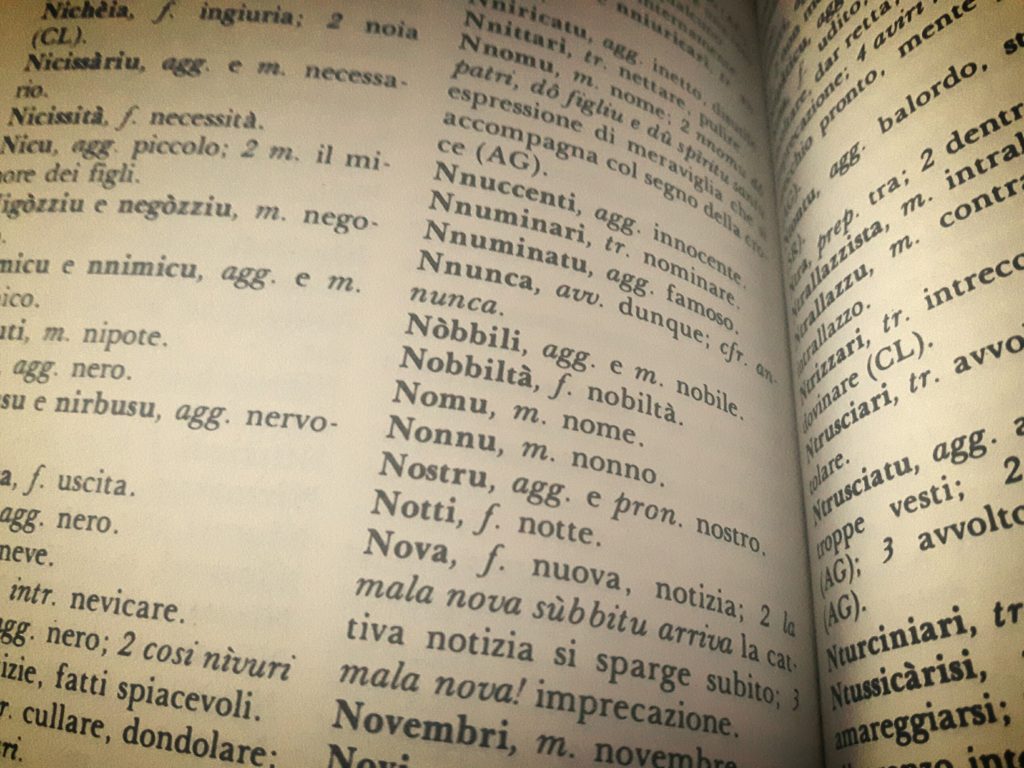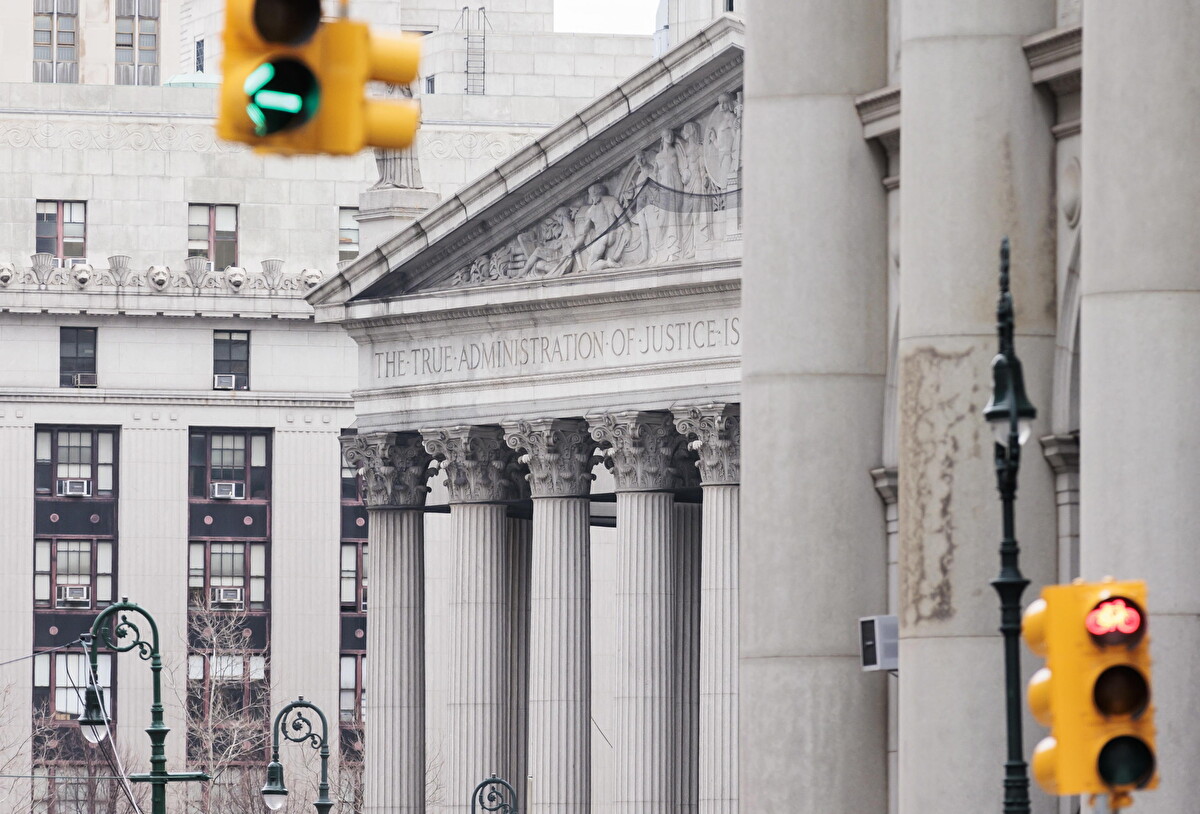As president and editor of Arba Sicula, a non-profit international organization that promotes the Sicilian language and culture, I am always looking for materials that can help me fulfill the objectives of the association. So, I was pleased to purchase the entire set of publications prepared in the sixties by the National Defense Institute in Monterey, California, to teach Sicilian to United States military personnel.
The package contained five volumes of dialogues, pattern drills, readings and exercises, 50 tapes recorded by native speakers of Sicilian, and several other support volumes such as Corrado Avolio’s Introduzione allo studio del dialetto siciliano published in 1882; another text written in Italian of a Sicilian Grammar written by Innocenzio Fulci also published in the middle of the 19th century and reproduced as printed in 1963, as well as a Reader containing various Sicilian texts ranging from short stories to poems.
 The basic course in Sicilian was composed of five 8.50 by 11.00 hand-bound typewritten volumes that were reproduced probably on a Xerox machine and stapled together, as were all the other volumes. As one would expect, the basic course uses the audio-lingual method that was very popular at the time for teaching foreign languages. Each chapter begins with a dialogue that needed to be memorized, the content of which is then recombined as a prose narrative, which is followed by pattern drills designed to develop automatic responses by constant repetition and memorization. Each chapter has supplementary vocabulary to enrich the content and a list of new words introduced during the chapter. The grammar explanations are kept to a minimum and are presented at the end of the chapters, presumably after the material has been digested.
The basic course in Sicilian was composed of five 8.50 by 11.00 hand-bound typewritten volumes that were reproduced probably on a Xerox machine and stapled together, as were all the other volumes. As one would expect, the basic course uses the audio-lingual method that was very popular at the time for teaching foreign languages. Each chapter begins with a dialogue that needed to be memorized, the content of which is then recombined as a prose narrative, which is followed by pattern drills designed to develop automatic responses by constant repetition and memorization. Each chapter has supplementary vocabulary to enrich the content and a list of new words introduced during the chapter. The grammar explanations are kept to a minimum and are presented at the end of the chapters, presumably after the material has been digested.
I already had in my possession four of the five volumes, but after looking at the first volume I realized that they were basically curiosity pieces not only because the audio-lingual method was no longer regarded as pedagogically effective, but also because the dialogues seemed outmoded and archaic and contained too many typographical errors as well as questionable grammar explanations. I therefore put them aside and did not give the texts a second thought.
When I began working on a comprehensive and interactive grammar of Sicilian, now in print, I thought I should take another look at the complete set of texts and tapes in my possession. I was interested to see how the authors (there are no names of authors, although I know someone who was an instructor of Sicilian at the Institute) treated certain problematic features of Sicilian, how they wrote certain peculiar sounds, what vocabulary they adopted and whether they had any preferences vis à vis the varieties of Sicilian one can hear on the island. With this in mind I went through the basic course and listened to some of the tapes. The experience was a rollercoaster ride of feelings ranging from unrestrained fits of laughter to mild amusement to anger, and finally to depression. In my career as a professor of Italian, I have never had reactions such as those engendered by the Sicilian course prepared by the National Defense Institute. The Sicilian course taught at Monterey, which I always referred to with some pride because it was the only place in the world where Sicilian was taught, managed to be offensive in every category. I was shocked primarily by the scope and objective of the course, and most of all with the characterizations of the Sicilian people and of their culture as they emerge from the dialogues and texts of the course. What’s more, I was also surprised and disappointed that the National Defense Institute chose to teach a hybrid form of Sicilian that can only be considered a sub-language, a specialized jargon that diminishes the status of a language that was the first poetic language of Italy with a literary tradition that is as old as English, if not older.
Let me address each of these two points:
Language textbooks try to address the culture that a language represents in a constructive and respectful manner, highlighting the country’s contributions to the world. When you pick up a French textbook, you will find articles describing French cuisine, fashions, wines, shopping in Paris, family life, art and literature, the Enlightenment, the French Revolution and so on. Their Italian textbook is very similar to other textbooks. Often these texts will have an American young man or young woman who acts as the mirror of the foreign culture for the home crowd. Normal textbooks devise every conceivable situational plot: shopping at the supermarket, going to the movies, visiting the Louvre, meeting interesting characters, eating at a local trattoria, and so on.
The topics provide the opportunities to present the culture of the country as well as the grammatical points explained in the chapter. But the Sicilian textbook is unique in this regard. There are no lovable young characters named Pippinu or Cicciu, Maria or Rusetta. The characters they employ are named Giuanni lu Sirausanu, lu Missinisi or Giuanni lu Scunzatu, and a number of people named Turiddu, Mariu or Ndria who lack a last name not because the book wants to promote familiarity, but because providing their last names, though fictitious any way, could be used to identify them.

The characters move in an environment where last names are seldom used. And what do you suppose all of these interesting characters do for a living? They are all gangsters, members of the mafia and they are not based in beautiful Sicily, but in California, precisely in San Diego, near the Monterey Presidio, where the National Defense Institute had it base of operations. What do they do? They engage in illegal activities that range from robbing a bank to smuggling narcotics. Beginning with Chapter 22 and concluding with chapter 40, a good one third of the fifty chapters is devoted to their nefarious activities. As readers may question my words, I will briefly describe some of the dialogues:
Chapter 24 is titled Un vicchescini a San Diegu. Without focusing on the use of the word vicchescini which is Sicul-English for “vacation” for the moment, one imagines an innocent excursion to view the sight of this beautiful California city by the sea. The vicchescini, however, turns out to be something other than a vacation. We understand it to be a code word for something else when the speaker adds, mi capisci? to the sentence, lu bossu mi mannau a vicchescini, mi capisci? (The Boss sent me on vacation, do you understand me?). The interlocutor, who is obviously a member of the ghenga (gang), quickly understands and we too know something’s afoot. It turns out that the guy has to go to San Diego to rob a bank.
Chapter 25 is titled Priparativi pi un furtu. (Preparing for a Robbery) In this chapter the two mafiusi prepare a suitcase with all the tools they need to pull off the robbery. A list of very useful vocabulary is introduced, including cacciaviti (screwdriver), trapanu (drill), marteddu (hammer), pistola (gun), and dinamiti (dynamite), to name a few. They also mention idiomatic sentences like traviari lu carru (drive a car) for the fast getaway, and an item seldom present in a typical language textbook: li impronti digitali (fingerprints). So, they need to wear guanti (gloves) and maschiri (masks) in order not to be recognized. In spite of the concern they display for not forgetting any tools they might need, the dialogue ends with the two mafiusi enjoying a relaxing tazza di cafè, (a cup of coffee) which they will drink, no doubt, with the pinky finger raised.
Chapter 26 is titled Arrivu a la banca (Arrival at the Bank). As was customary for the audio-lingual method, the vocabulary learned in previous chapters needed to be recycled before new vocabulary was introduced. Thu,s we learn from their dialogue, recorded in real time as they are pulling off the robbery, that they managed to blow up the casciaforti (safe) with the dinamiti they had stolen before and they exercised caution not to leave behind the impronti digitali. But while using the drill to open the safe, the one charged with this task opts for using the dynamite to blow it open. The noise of the blast must have attracted attention because they hear people coming and one of the mafiusi tells the other to prepare his pistola for shooting against the polizzia.
Chapter 27 is titled La Scappatina (The Escape) and it shows the two mafiusi running with a valise full of cash in a ‘62 white Ford. While in the car they hear the radio announce how li pulissi (the Police) have set up a road-block on the main arteries blocking the road to the airport where a plane was to take them to Mexico. When they reach the road block they see un troccu misu di chiattu nta la strata (a truck parked sideways across the road) and li pulissi (chi) stannu pirqusennu (sic) li machini (and the police searching the cars). As regards the troccu misu di chiattu that I translated as a truck placed sideways across the road, I understood what they meant by the context and not by the words they used. They meant to say di traversu, not di chiattu.
Chapter 28 is titled Lu inseguimentu di li pulissi (The Police Chase) and the conversation mimics gangster movies of the fifties and sixties where li pulissi and the bad guys engage in shooting chase that ends badly for the mafiusi when their car gets a flattai (flat tire) and slams into a tree injuring the driver and pinning the leg of one of the other two under the seat.
Thus Chapter 29 is titled Interrogatoriu di un suspettu (Police Interrogation of a Suspect) and its dialogue reminds me of Nino Martoglio’s famous sonnets entitled O scuru o scuru about delinquents living in the Civita section of Catania. Martoglio records some of the mobsters’ activities as well as some of their appearances before judges or police interrogators. In Martoglio’s sonnets the obviously guilty mobsters reply to the police questions with such pathetic excuses that incontrovertibly seal their guilt instead of declaring their innocence.
Chapter 30 continues the interesting journey into Sicilian culture. It is entitled Perquisizioni di un firmatu (Searching a Detained Person) and it too brings to mind Martoglio’s sonnets. Here too the mafiusu provides unimaginative and uncooperative replies. After searching him, the police found a small German pistol in his belt and asked him where he got it. He replied, Mi la purtai iu di la Gemania. (I brought myself from Germany). Why didn’t he register it? Pirchì mi lu scurdai! (Because I forgot). What about the morphine they found in his shoe’s heel? Cu ti desi ssa morfina? (Who gave you that morphine?) Nun mi la desi nuddu! (Nobody gave it to me!)

The next few chapters deal with ordinary themes like getting a haircut —Dons need to look dapper, don’t they?—but even talking about the health of a daughter or making what seems to be an innocent appointment to meet somebody reveals that we are still dealing with people operating on the fringes of legality.
These textbooks were not designed like a regular language text. They were meant to provide American military personnel with enough linguistic ability to comprehend basic situations arising from interaction with Sicilian-Americans and Sicilians belonging to organized crime families. I suppose that the Mafia in the sixties and seventies was perceived as a real threat to American society and that the government had reason to believe that teaching Sicilian to military personnel was a good investment. I suspect that the students taking this course were policemen, drug enforcement officers, and people engaged in the fight against organized crime.
The goal, as stated at the beginning of the basic course, was to bring American military personnel to level 3 proficiency in comprehension and speaking and level 3 proficiency in reading and writing Sicilian, both of which in retrospect, seem overly ambitious. (Level 5 proficiency was reserved for people who have the linguistic abilities of an educated native.) If the aim was to prepare policemen to infiltrate the Sicilian mafia, it was highly unlikely that even excellent students would be able to accomplish it. They probably would be exposed the moment they opened their mouth. The fact that the basic course used what can only be called a hybrid language made up of Sicilianized English words confirms that the students were to become proficient in the language supposedly spoken among Sicilian Americans who on their way to integrating into American society forgot how to speak Sicilian and resorted to a mixture that can be classified as Sicul-English. Immigrants from Spanish speaking countries have given rise to Spanglish, the French complain about their Franglais and Sicilians created their own Sicul-English.
The authors of the texts did not invent anything. Most of the words they used in the dialogues I had heard before, although I had never seen some of them written. I certainly had no difficulty with words like l’aisiscrima, (ice cream) lu bisinissi, (business) li franchifutti, (frankfurters) lu troccu, (truck) lu trubbulu, (trouble) la furnitura, (furniture) la ghenga, (gang) lu concritu, (concrete) la barra, (bar) la stima, (steam heat) lu sannuicciu, (sandwich) lu bicciu, (the beach) bisi, (busy) la marchetta, (market) lu sittu, (seat) lu chendi, (candy) li cucchi, (cookie) l’emma, (ham) lu scacci, (scotch) lu pulissi, (policeman) lu ciffi di li pulissi, (Chief of police) l’aiuvè (highway). I did have to ponder a bit to understand what an ira was until I mouthed the sound. Ira stands for heater, n’aisiboll is a high ball drink, li prizzi are actually pretzels and lu flattai is a flat tire while li apricozzi are apricots. These are words actually used in the dialogues and duly recorded in the vocabulary list of new words. A newly arrived Sicilian would have a severe attack of culture shock on hearing such utterances. The words sound like Sicilian but are nothing more than English dressed up in Sicilian.
Native Sicilians would also not understand the idiomatic phrases based on the English language nor would they understand cultural aspects. During the chase scene one of the mafiusi urges his companion step on the gas when they get near the truck (quannu arrivamu vicinu a lu troccu, … metti gas.) The expression metti gas would not be understood because Sicilian cars do not run on gas, they run on binzina. The use of such hybrid vocabulary clearly puts the student at a disadvantage in communicating with Sicilians who have not been exposed to American English. Imagine an undercover DEA agent trying to infiltrate a Sicilian gang!
Additionally, the dialogues are written in a language that is definitely archaic and dated, not by today’s standards, but by the standards of the sixties and early seventies. Sicilian Americans who are still fluent in Sicilian and who try to speak Sicilian when they visit the island routinely complain that the locals react with surprise on hearing their dated language. The language of the immigrants remains basically the same, while the language of the people on the island is exposed to many changes.
The most pernicious shortcoming of these texts is the characterization of Sicilians as gangsters, devoted to robbing banks, smuggling drugs, and engaging in countless other criminal activities. I see these teaching materials as one more example of the unfair campaign of negative characterization of Sicilians from their arrival to the US. Creating a Sicilian language textbook whose main characters are Sicilian thieves and murderers is simply inexcusable. The authors were aware that they were proposing something that was “controversial,” but they excused themselves by saying that the military personnel needed to know the language of the criminals. As inexcusable as these texts are, they are made worse by the impression that Sicilian was singled out for the special treatment. The Italian textbook that I purchased along with the Sicilian one is altogether different. No gangsters appear as running protagonists of the dialogues. As I don’t have the French or Spanish textbooks, I cannot say whether French or Spanish are given the same treatment as Sicilian. Smuggling and drugs have been connected with both areas. We all remember the famous smuggling operation known as the French Connection and the terrible problem posed by the Spanish-speaking South American drug lords. But even if the French and Spanish textbooks utilized gangsters speaking Franglais and Spanglish, which seems unlikely, my condemnation of the Language Institute’s enterprise would not be less vehement. They have done a disservice not only to the Sicilian language, but to the Sicilian people.










